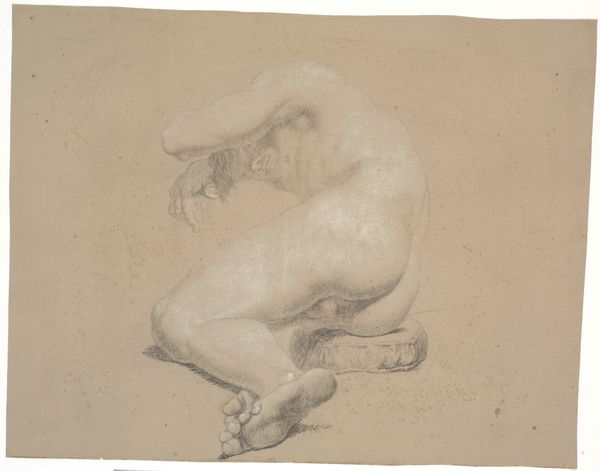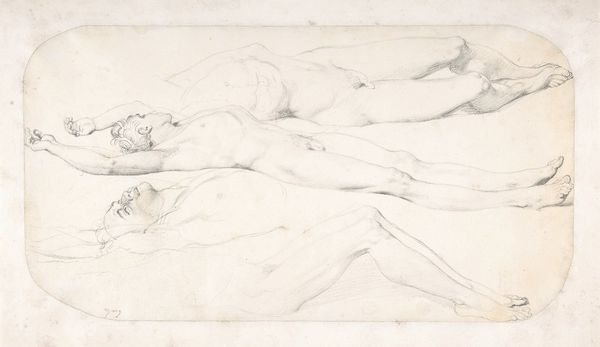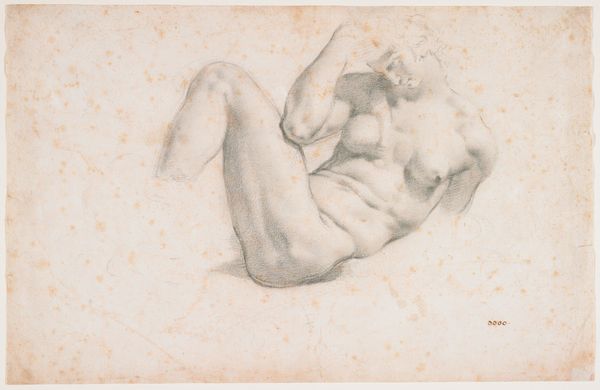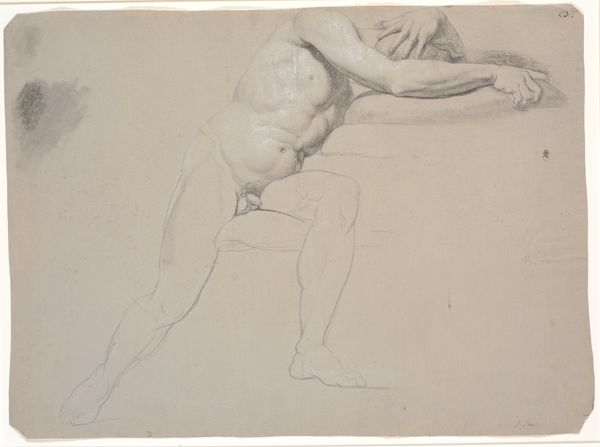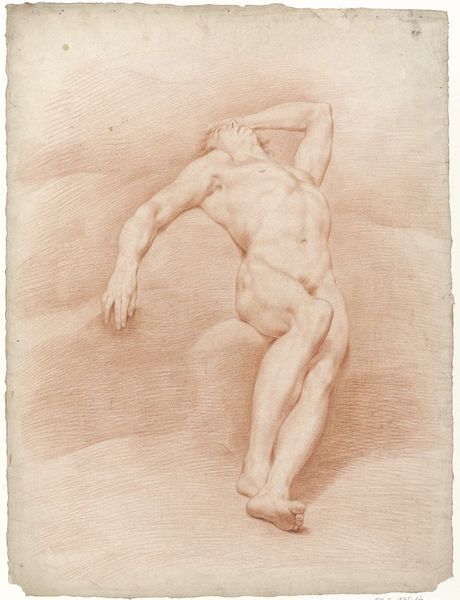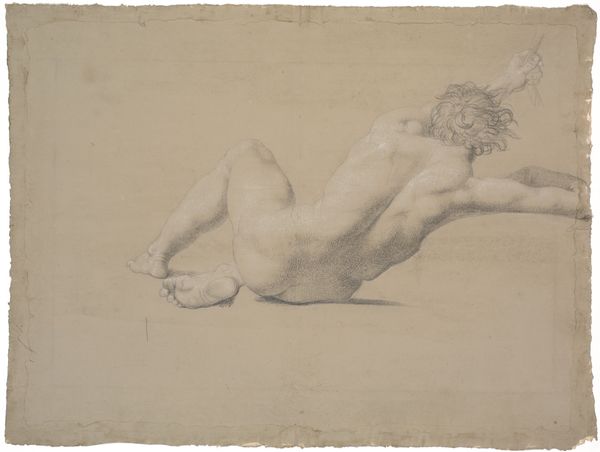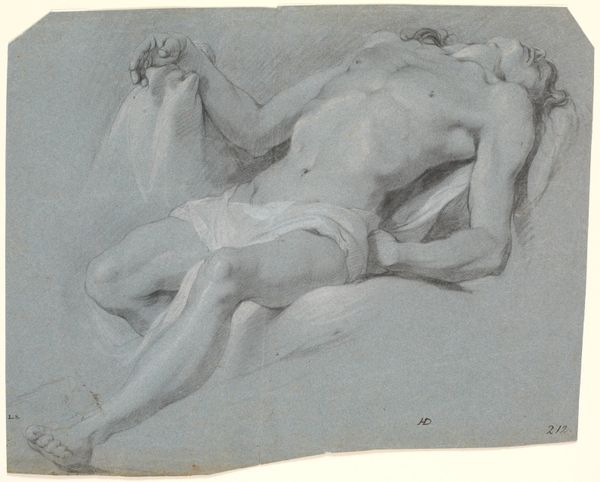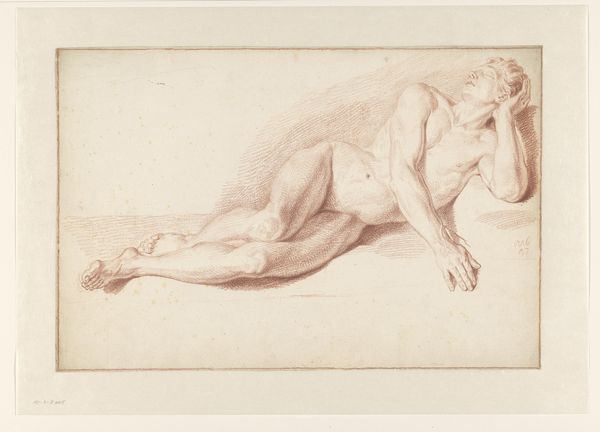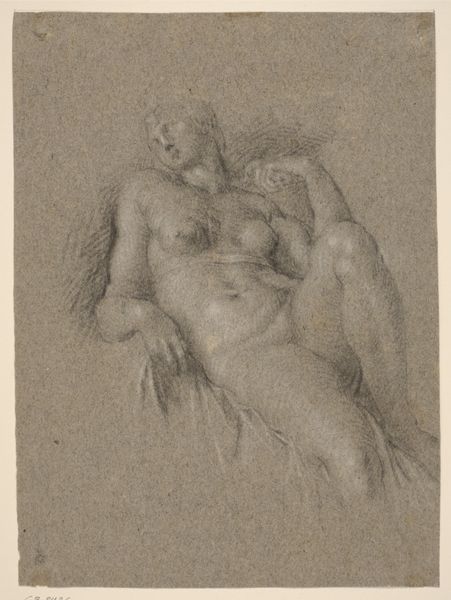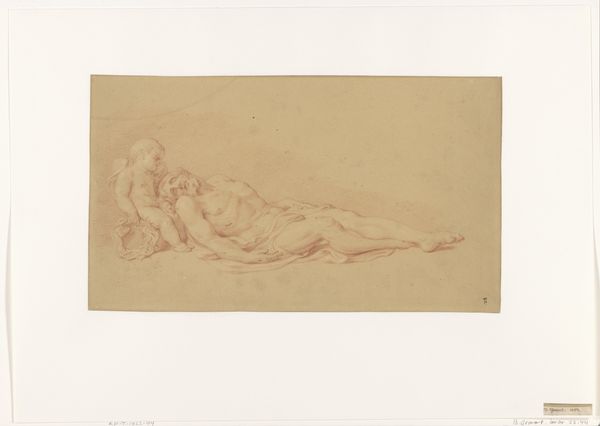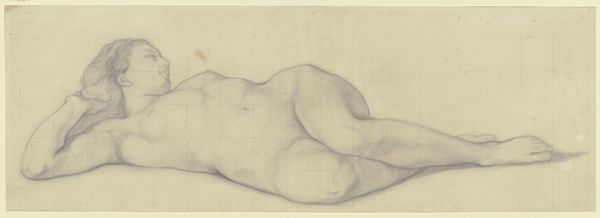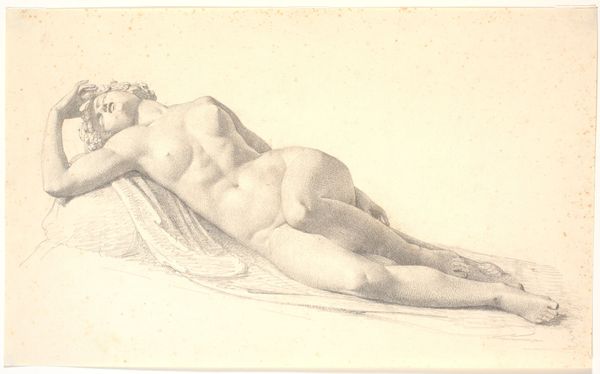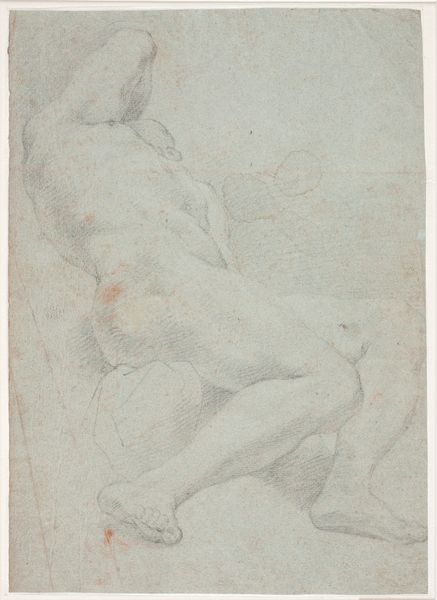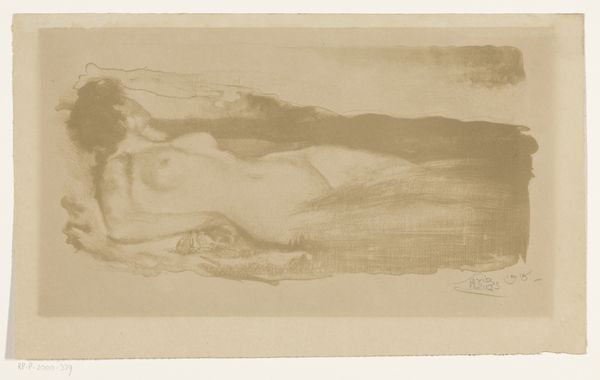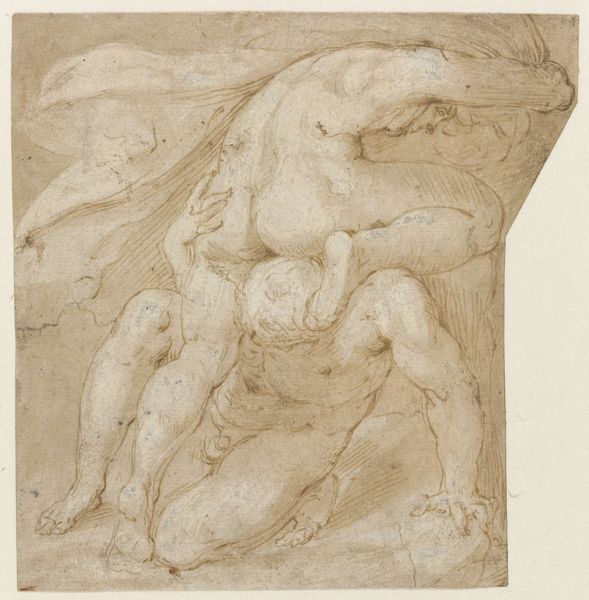
Dimensions: object: 267 x 641 x 229 mm weight 55.6kg
Copyright: CC-BY-NC-ND 4.0 DEED, Photo: Tate
Curator: Pomeroy's "The Nymph of Loch Awe" at the Tate, presents a reclining female figure carved from marble. Editor: Its cold, inert beauty is instantly arresting, a study in form and repose. The whiteness feels almost glacial. Curator: Indeed, the nymph evokes a powerful symbolic connection to water spirits and the natural world. Nymphs represent feminine divinity, guardians of springs and fresh water. Editor: Note the artist's treatment of the marble surface; it is polished to a high sheen, which emphasizes the contours of the reclining figure and suggests fluidity. Curator: The mythic and spiritual dimensions are evident, a return to Arcadia, where humanity dwells in harmony with nature. Editor: Ultimately, the sculpture's success lies in its ability to render the human form with technical precision, while simultaneously suggesting the mystical and timeless power of nature. Curator: Precisely. We are left to contemplate the enduring relevance of these archetypal figures.
Comments
tate 8 months ago
⋮
http://www.tate.org.uk/art/artworks/pomeroy-the-nymph-of-loch-awe-n01759
Join the conversation
Join millions of artists and users on Artera today and experience the ultimate creative platform.
tate 8 months ago
⋮
This subject was based on an old legend explaining the origin of Loch Awe in the Scottish Highlands. A nymph was asked to watch a magic well to check that the water did not rise above a certain height. She fell asleep, the water rose and she drowned. Dead or dying female figures lying prostrate on the ground were a popular subject in French art at this time. But they were usually more sensuous than Frederick Pomeroy’s figure. In contrast, he arranges the woman’s limbs to emphasise the weight and vulnerability of her body. Gallery label, February 2010
